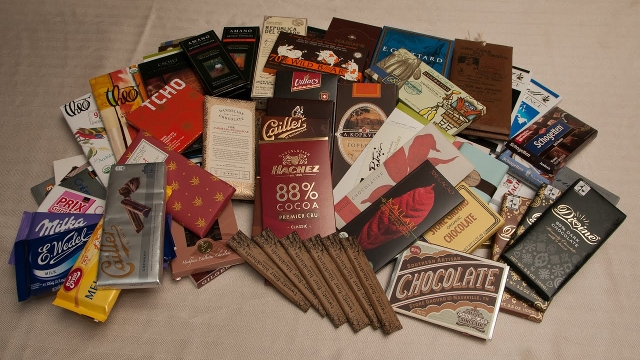
Chocolate scientists study everything from the disease resistance of cacao trees to the health benefits of the finished product. But they shy away from one critical question: which chocolate tastes best?
Flavor is subjective, of course. But with a healthy sample size, a blind taste test, and a solid dose of statistics, one Bay Area foodie hopes to find an answer. IBM research engineer and UC Berkeley graduate student Christine Robson has held chocolate tastings at her San Jose home since 2007. This year's event on February 12 featured fifty-four chocolates, forty-two tasters, and an evening of rigorous data analysis.
Chocoholic scientist that I am, I couldn't stay away.
Guests included Annika Mongan of brand new Berkeley chocolate maker Ostara, who cleverly brought some raw material. Sure, I knew cocoa beans came from a cocoa pod, but I didn't realize they were surrounded inside that pod with gooey cocoa pulp, called baba in Spanish--drool. Despite its unappetizing name, I enjoyed the dried baba; its flavor was similar to other tropical fruits like papaya and mango.
Although most of us never taste it, cocoa pulp is crucial to the flavor of chocolate. After picking the pods, farmers pile the beans and pulp together and ferment them for days. Yeast, bacteria, and fungi take turns breaking down pulp sugars, producing acids. Longer fermentation creates more acidic beans and a stronger, more aromatic flavor. Shorter fermentation leads to a milder flavor.
